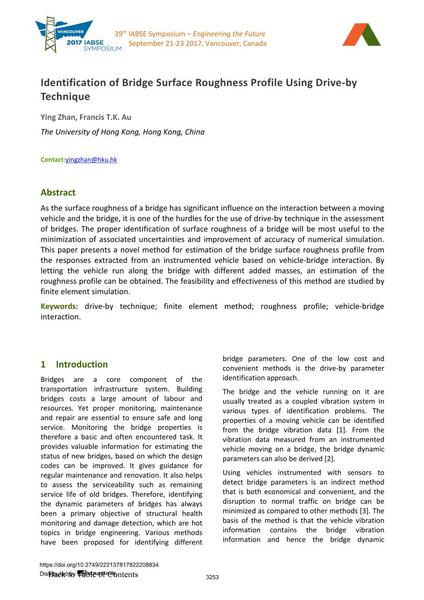Identification of Bridge Surface Roughness Profile Using Drive-by Technique

|
|
|||||||||||
Détails bibliographiques
| Auteur(s): |
Ying Zhan
(The University of Hong Kong, Hong Kong, China)
Francis T. K. Au (The University of Hong Kong, Hong Kong, China) |
||||
|---|---|---|---|---|---|
| Médium: | papier de conférence | ||||
| Langue(s): | anglais | ||||
| Conférence: | IABSE Symposium: Engineering the Future, Vancouver, Canada, 21-23 September 2017 | ||||
| Publié dans: | IABSE Symposium Vancouver 2017 | ||||
|
|||||
| Page(s): | 3253-3260 | ||||
| Nombre total de pages (du PDF): | 8 | ||||
| Année: | 2017 | ||||
| DOI: | 10.2749/222137817822208834 | ||||
| Abstrait: |
As the surface roughness of a bridge has significant influence on the interaction between a moving vehicle and the bridge, it is one of the hurdles for the use of drive-by technique in the assessment of bridges. The proper identification of surface roughness of a bridge will be most useful to the minimization of associated uncertainties and improvement of accuracy of numerical simulation. This paper presents a novel method for estimation of the bridge surface roughness profile from the responses extracted from an instrumented vehicle based on vehicle-bridge interaction. By letting the vehicle run along the bridge with different added masses, an estimation of the roughness profile can be obtained. The feasibility and effectiveness of this method are studied by finite element simulation. |
||||
